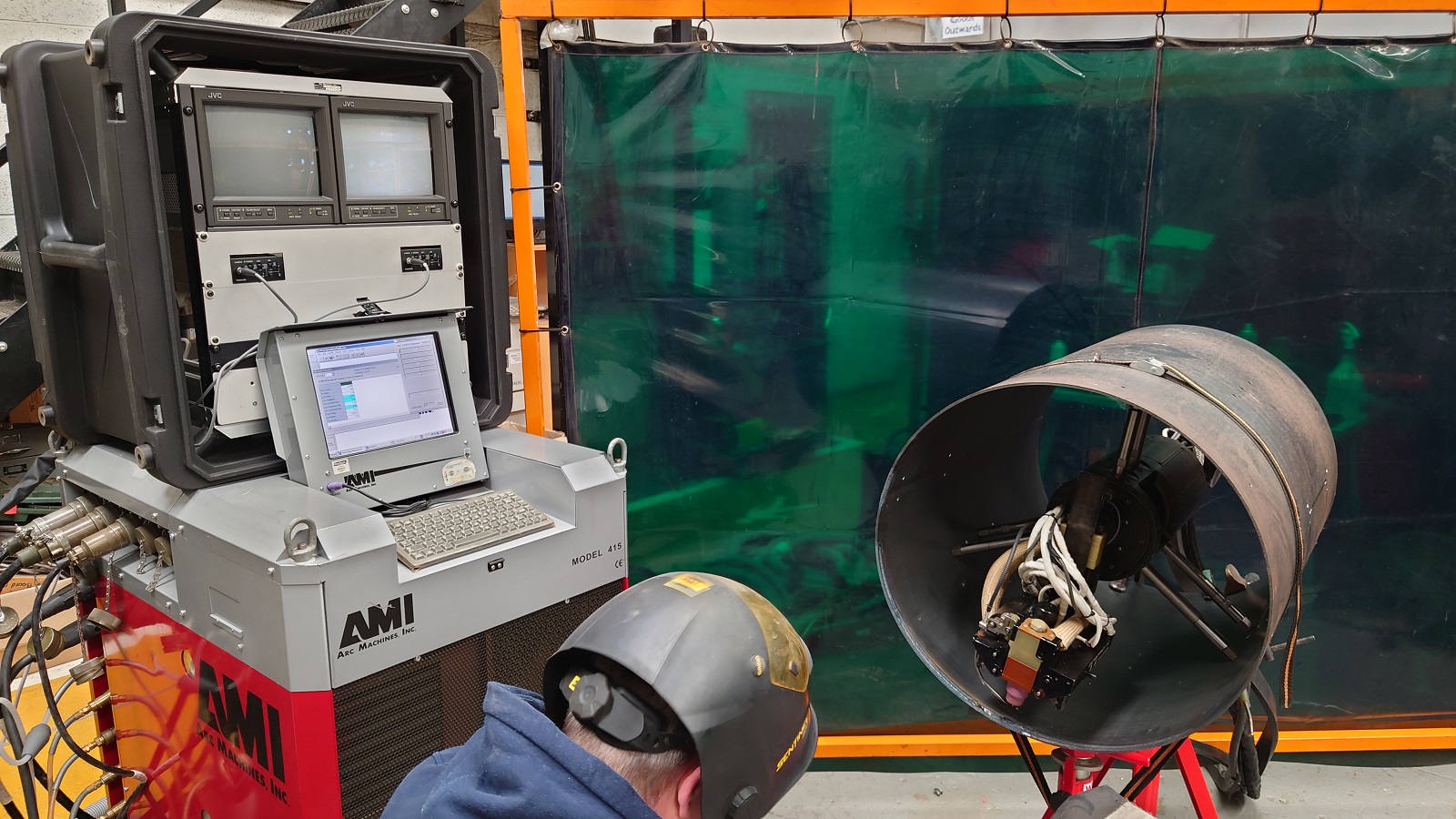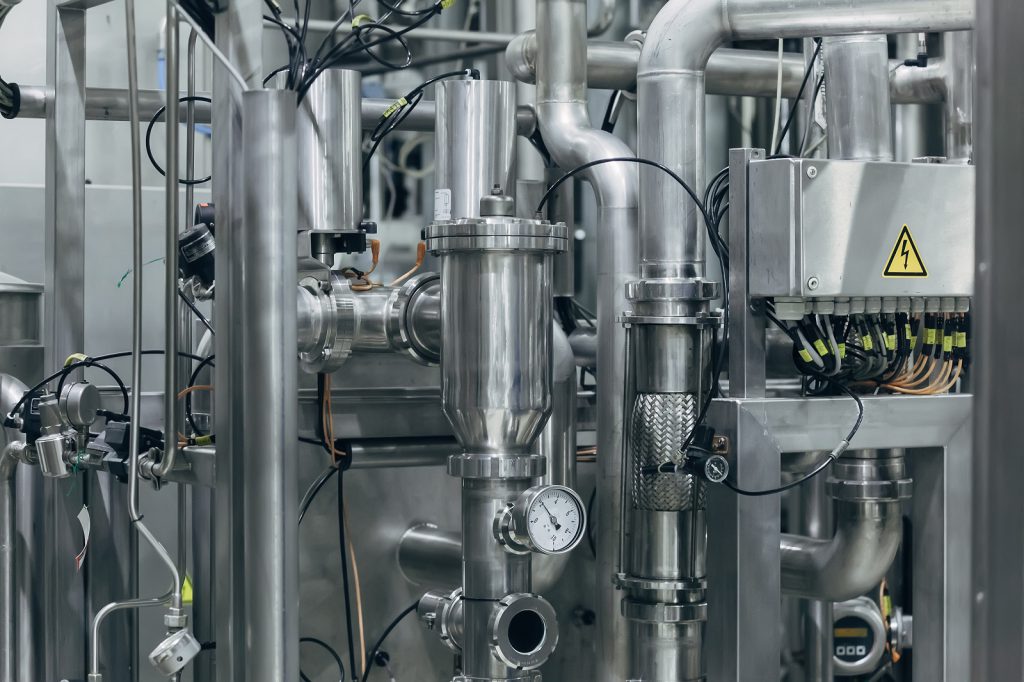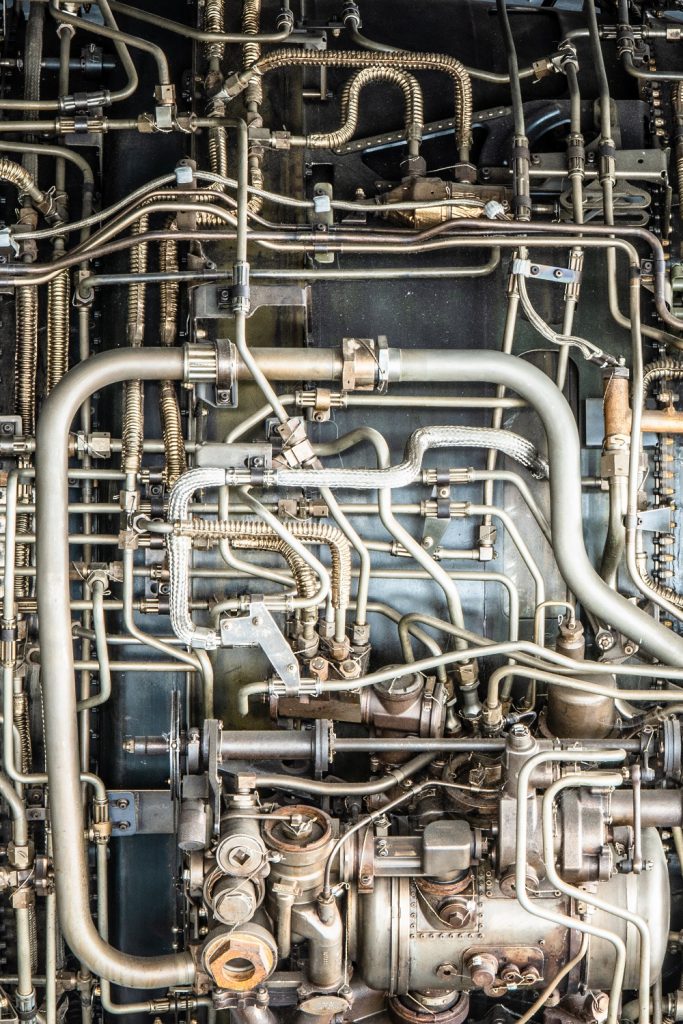
Introduction:
Automated orbital welding systems are among the core technologies that enable the modern world to function. The preciseness, consistency, and productivity of orbital welding ensures smooth operations in many industries. From pharmaceutical to aerospace, and semiconductor industry, orbital welding applications play a huge role.
We couldn’t have modern aircraft or smartphones, as chip manufacturing relies on orbital welding. So, the device you are using to read our blog would be more challenging to make without orbital welding. Providing the necessary weld integrity for semiconductor stainless steel processing lines. Oh, and the price of oil and gas would probably be higher if we excluded this vital welding process from the industry.
No other welding technology can match the orbital welding quality for tube and pipe welding applications. So, let’s dive into orbital welding and see how it benefits almost every major industry in the world.
What Is Orbital Welding?
Orbital welding is an automated welding method where the torch rotates around the static tube or pipe. The 360-degree rotation provides a consistent weld speed, tip-to-joint distance, and weld quality.
Orbital welding was designed to remove human error. As well as providing repeatable weld results for greatest efficiency, safety, and joint quality. You can use many arc welding processes with this automation method. However, orbital welding mostly uses the TIG welding process, which is the focus of this article. You can learn more about how orbital welding works in our separate guide.
Orbital Welding Applications.
TIG orbital welding provides the cleanest welds, thanks to it’s focused arc and non-consumable tungsten electrode. Most critical orbital welding applications rely on TIG welding. This is because it allows perfect accuracy and exceptional heat input control. As well as it’s main draw; virtually contamination-free welds. So, if you are unsure when to use orbital welding, the answer is whenever you need to join tubes and pipes for costly equipment and critical lines.
Thanks to TIG versatility, orbital welding applications include almost all metals. You can join aluminium, magnesium, titanium, stainless steel, and exotic alloys. Achieving near-perfect welds on each!
Food, Dairy, And Beverage.
The food, dairy, and beverage industries are heavily regulated to improve food safety and quality. Which includes the welds joining the pipes, tubes, fittings, and equipment. The sanitary pipe welds must have consistent, full penetration, and their surface must be smooth and without crevices. This prevents bacterial growth and meet the strict sanitary stainless welding requirements.
The majority of food, dairy, and beverage production requires stainless steel tube welding. This material is highly resistant to corrosion and contamination. But, it’s also prone to carbon precipitation if overheated during the welding process. This could lead to the loss of corrosion resistance.
The precision of computer-controlled TIG orbital welding systems ensures consistent and accurate tungsten rotation around the pipe/tube. Preventing excessive heat input and ensuring the continuation of corrosion resistance.
Semiconductor Industry.
Semiconductor production relies on miles of stainless steel processing lines. These transport highly toxic and corrosive gasses necessary for chip production. These tubes must not distort from heat input or lose corrosion resistance. Plus, the greatest weld purity and integrity are non-negotiable.
The orbital TIG welding process has been the industry’s standard since the early 1980s. Today, it’s the most reliable way to meet the needed weld quality and flexibility. As well as the ever-increasing stringent requirements of the semiconductor industry. Usually, a closed weld head is used to provide maximum weld shielding and cutting oxidation of the bead. Contractors working in the semiconductor industry often use Magnatech, Orbitalum, and AMI orbital welders. This is due to their high-quality software, precision, and reliability.

Oil and Gas Pipe Welding.
While some contractors still use manual stick, MIG, and TIG welding in offshore drilling operations. Or for joining pipelines that transport crude oil and gas, automated orbital welding offers higher productivity and safety.
Everything from the tubular construction of oil platforms, to stainless steel pipes on the sea floor. As well as pipelines transporting the crude product, benefits from orbital TIG welding. Offshore rigs, crude transport pipelines, and tubes and pipes in petrochemical plants must be welded with absolute integrity. A single weld inspection failure prolongs the time to pipeline completion. Thus creating a bottleneck, since you can only lay pipes one after another. But, it’s even worse when the welds fail in service due to corrosive chemicals that flow through these pipes. Such pipeline failures can cause devastating environmental and capital damage.
Automated orbital pipe welding with TIG applies to pipelines in the oil and gas industry. The process provides exceptional precision, weld quality, and above all, consistency. All of these factors improve productivity and weld inspection pass rates. The oil and gas industry often uses specially cladded pipes and exotic, custom-formulated alloys. Both need stringent adherence to weld procedures, and orbital TIG welders can meet these demands. Orbital TIG welding heads for pipeline welding, like the AMI Model 15, are both rugged and precise, even in adverse outdoor conditions. So, while the TIG welding process is sophisticated, we can use it in rough work environments with the right equipment.
Pharmaceutical And Biotechnology
Thanks to the ever-advancing medical field and exceptional medical professionals worldwide, we’ve eradicated some of the most debilitating diseases like polio. The fight against cancer and other health maladies continues. But year on year, R&D engineers, scientists, and medical professionals are making inroads. Improving the successful treatments for the worst health problems every year. Still, pharmaceuticals and innovative medical devices must be produced in facilities fabricated to the highest standards.
The large-scale production of fluids, tablets, capsules, and vaccines includes hazardous chemicals. Processing, storing, and distributing, where the safety of the produced medicine is of utmost importance. Safety of working personnel is also a huge priority every step of the way. A weld cannot be responsible for a contaminated batch because lives could are at risk. This is why sterile tube welding in the pharmaceutical industry is one of the most regulated jobs on the planet.
These high-purity industries have the most demanding requirements for pipe and tube cleanliness. Which includes standards for high-purity fusion pipe welding. This is especially important for CIP (Clean in Place) and sterile WFI (Water For Injection) systems. Sanitary tube and sanitary pipe welding in these industries rely on orbital TIG welding to meet stringent codes and standards. Orbital welding is the most reliable method to produce accurate and smooth welds without crevices. As well as reducing loss of corrosion resistance, or contamination that can compromise the medicine safety. Orbital TIG welding helps to save lives, by allowing us to create complex, functional, and safe medicine production systems. Welding these systems by hand would be almost impossible!.

Aerospace
Have you ever heard the saying that flying is safer than driving a car? It’s true. Research by Harvard University shows that flying in the US, Europe, and Australia has a 1 in 1.2 million chance of a flight accident. While the chance of a fatal car crash is 1 in 5000! Today, flying is safer than ever, and according to MIT, flight safety increases year after year. Of course, this is thanks to the brilliant engineers. Innovating and improving the airplane navigation, engine, and flight systems. But, orbital TIG welding plays a significant part in turning engineering ingenuity into reality.
Airplanes can have thousands of critical fuel and hydraulic control lines. These are exposed to highly complex cyclical loads and thermal stresses. Joining these tubes requires absolute process control, because any mishap can lead to a compromised joint. If this burst, it would present a major safety hazard. The welded joint must not negatively impact the alloy’s characteristics, contribute to corrosion, develop cracks, or distort. The heat input control is paramount, and computer-controlled orbital TIG welders are up to the task. The aerospace industry was the first to introduce orbital welding. It still relies on its near-perfect welding characteristics to create powerful, safe, and awe-striking airplanes. Including the likes of Boeings and Airbuses.
Power Generation
Fossil fuel and nuclear power generation plants rely on orbital TIG welding to meet stringent weld requirements. A single weld failure at a critical point could pose a significant safety hazard. Creating a high capital loss in these facilities. But to make matters worse, the tubes in power generation plants are often tightly packed. Meaning limited space for construction and welding.
TIG orbital welding systems are the industry’s standard for boiler tube welding and constructing heat exchangers. As well as economisers, superheaters, reheaters, and tube lines in power generation facilities. Thanks to their weld head’s compact size, versatility and accuracy. As well as adaptability and exceptional weld quality, orbital TIG welders provide excellent joint integrity. Meeting the demanding needs of power generation.
Shipbuilding
Large cruise and naval ships can be hundreds of meters long and tens of meters high! For example, the largest UK Navy aircraft carrier, the HMS Queen Elizabeth Class, is 280 meters long and 73 meters high! Likewise, cargo ships or vessels that transport crude oil can be of enormous dimensions. Such ships can take years to produce, with substantial time devoted to welding the hull plates and piping systems.
Modern ships have many piping systems, including engine cooling, steam, and fire protection. As well as bilge, water, and fuel systems. These piping systems are challenging to weld, due to stringent quality requirements and constricted spaces. The welder’s safety can often get jeopardised due to welding in cramped areas. Where the welding fumes can quickly displace the breathable air. Plus, these piping systems must be accessible for weld repairs while at sea. Emergency contingencies can require prompt welding repairs to save people on board. But quality construction prevents such events from happening in the first place.
Orbital TIG welding can join small and large diameter tubes and pipes in cramped areas, with near-perfect weld quality. The shipbuilding industry employs orbital TIG to pass safety and welding quality codes and regulations. Some vessels can have their own nuclear power generators, complicating the construction and amplifying safety hazards. These ships can require welding titanium, high nickel, and many specialised alloys. Orbital TIG welding easily achieves exceptional welds on these materials.
Westermans – Meet Your Orbital Welding Needs
Whether you are looking to buy, rent, or sell your orbital power sources and weld heads, Westermans is here for you. Contact us today, and our experts will help you choose suitable orbital welding machines. High-end brands like AMI, Magnatech, Orbitalum, Fronius and ESAB, are available from stock today.
Credit : Source Post






